Submitted by WA Contents
Mario Cucinella Architects installs landscape block to discuss circular economy and reuse in Milan
Italy Architecture News - Jun 10, 2022 - 12:48 2842 views
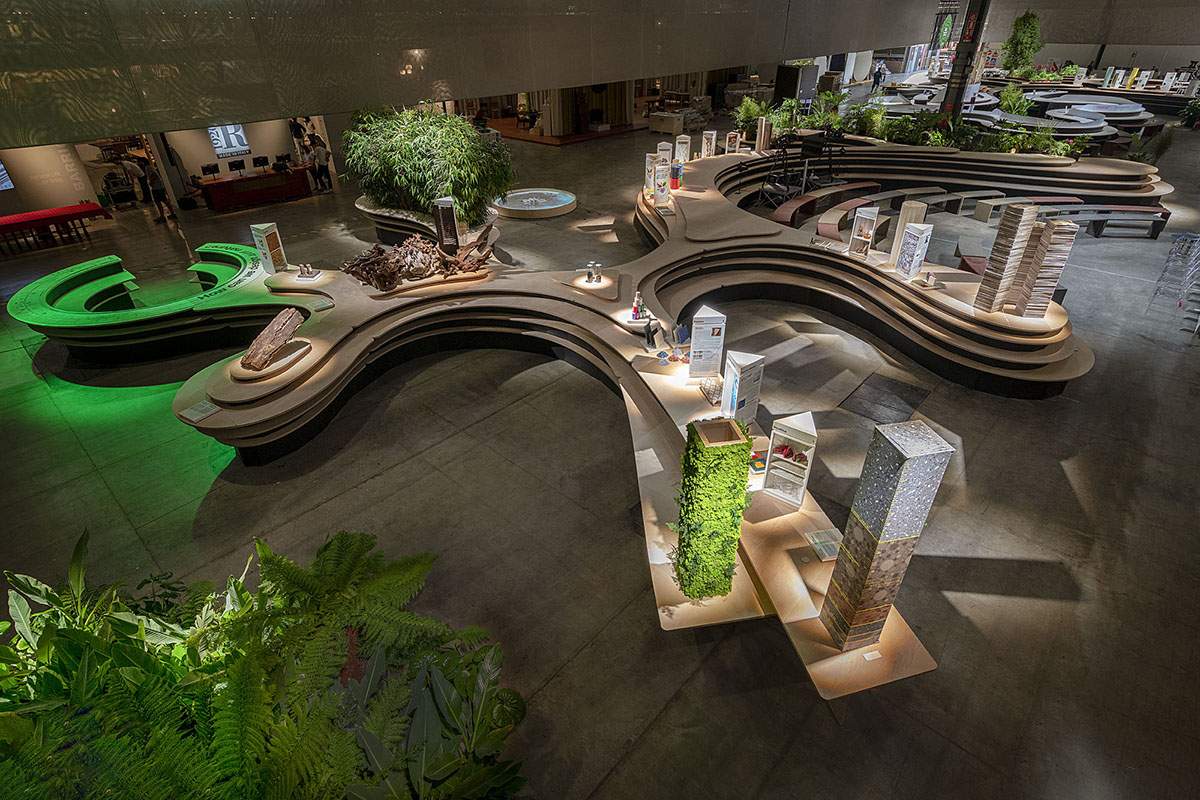
Mario Cucinella Architects has installed a large landscape block to discuss the vital aspects of circular economy and reuse at Milano Design Week 2022.
Salone del Mobile, the world's largest trade and design fair, was opened to the public on 7 June and will be on view until 12 June 2022 at the Fiera Milano fairground in Milan, Italy.
Called Design with Nature, the project is informed by many different aspects of sustainability: ethics, circularity, domestic space, participatory architecture and urban regeneration.
Curated by the architect Mario Cucinella, the installation is displayed in S.Project’s Pavilion 15 in Milan.
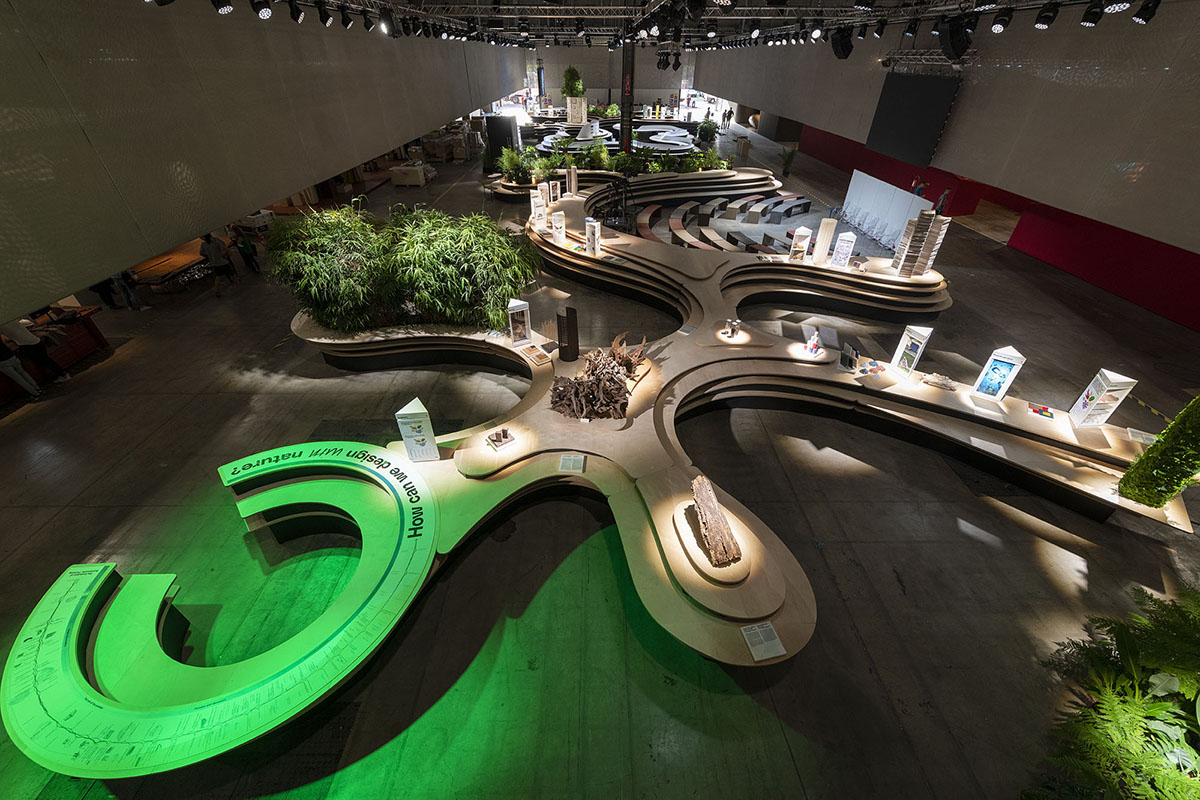
A sinuous landscape-formed block emerges as a space for dialogue, a refuge for discussion, sharing, reading, and reflecting.
The installation showcases different types of materials, building blocks, plants and books that emphasize our natural environment and available sources.
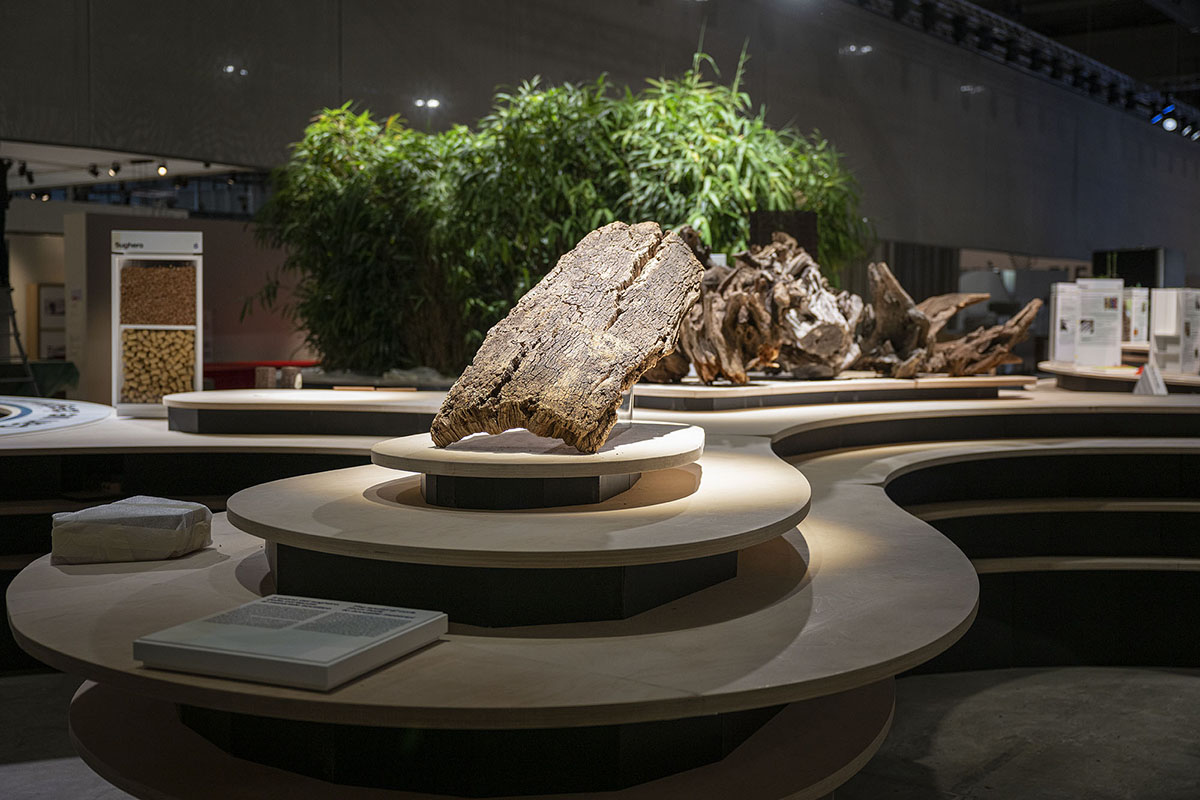
"How far has design come with regard to sustainability? Can we accelerate the ushering in of a new era in the way welive (in cities and at home)?," asked Mario Cucinella Architects.
"What tools and concrete and up to date materials does design have to hand?."
"It is a design and emotive exercise in pursuit of recycling and upcycling, entering into the debate on the importance of sustainable living," added the studio.
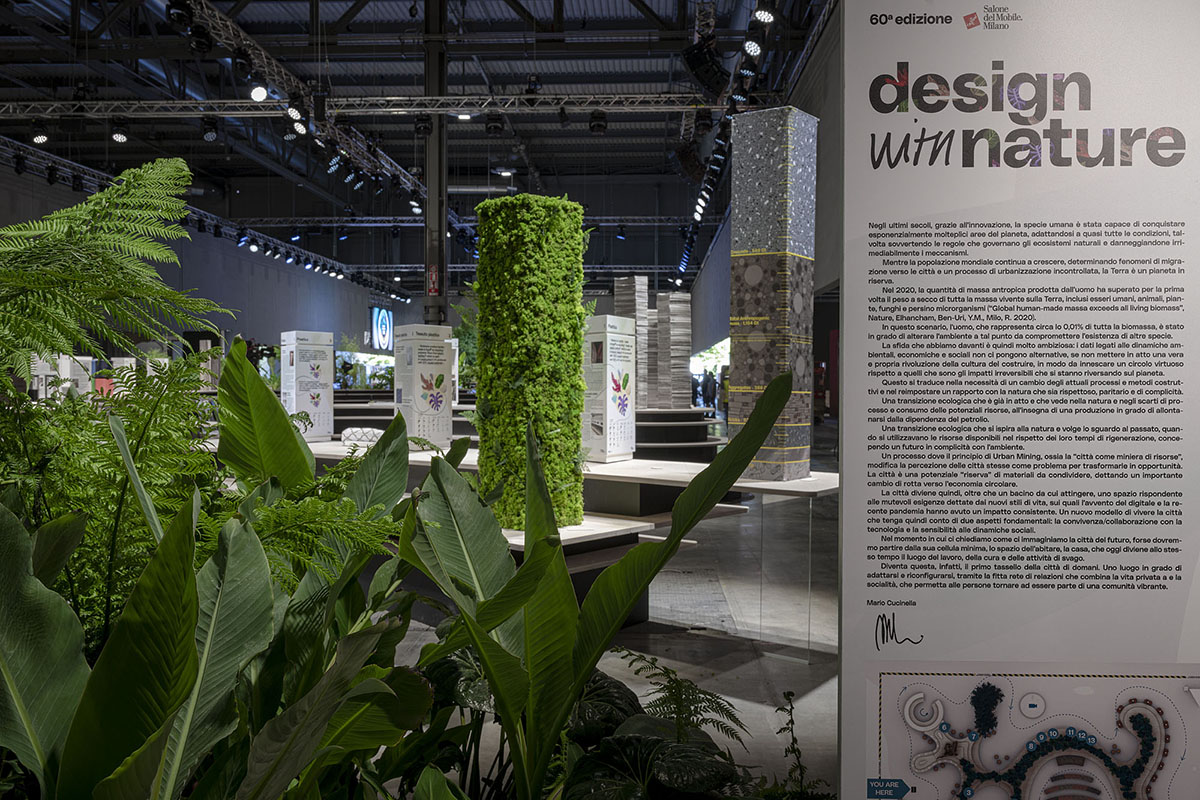
Aiming to increase conscious on the environmental challenge and climate change, the design calls for a radical change of approach, new environmental education and create an awareness that change is now possible.
The Salone brought in Mario Cucinella to work together on the theme of transforming the ways we inhabit the earth and on the role of architects and designers as prefigurers of future spaces, in a bid to (re)build the difficult equilibrium between territory, city and landscape.
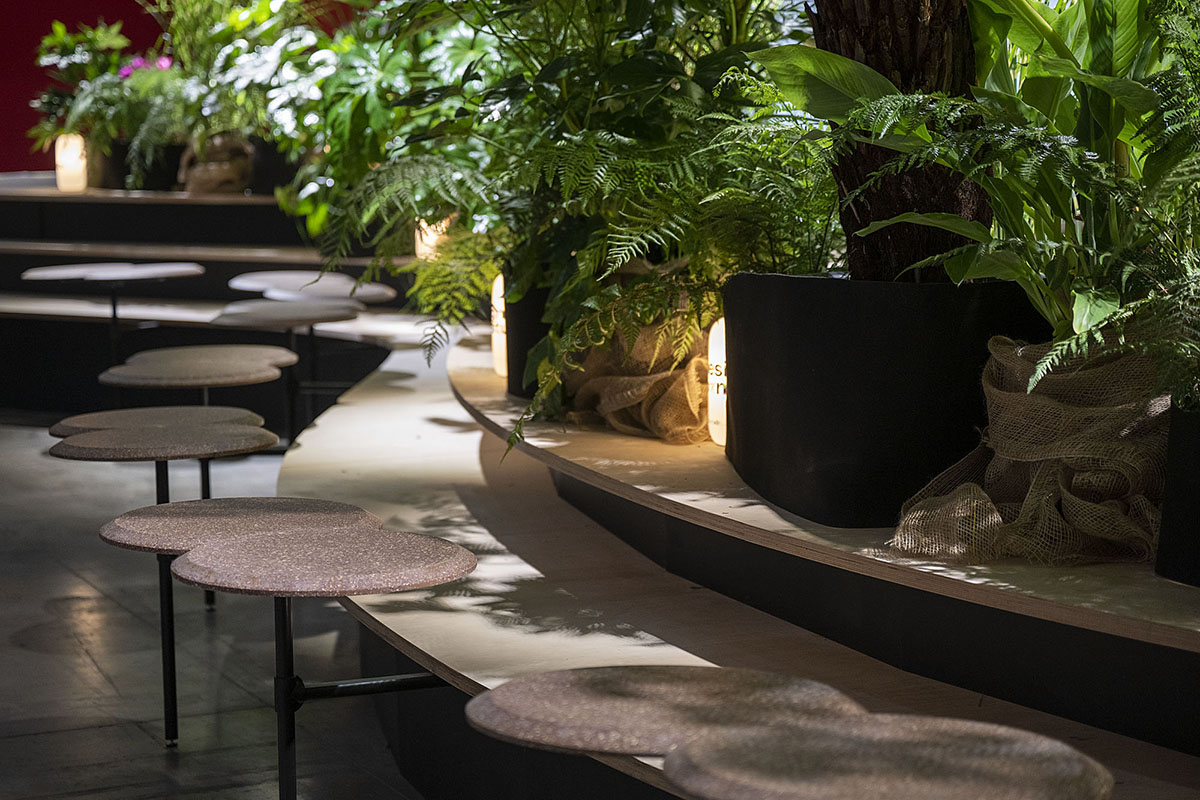
Cities could be possible “reserves” of the future
The installation explores the themes of circular economy and reuse, starting with the idea that cities could be possible “reserves” of the future, where most of the raw materials used in construction could be sourced.
The design is divided into three themes: the first one is ecological transition, the second one is the home as the first urban building block, and lastly, the city as a mine.
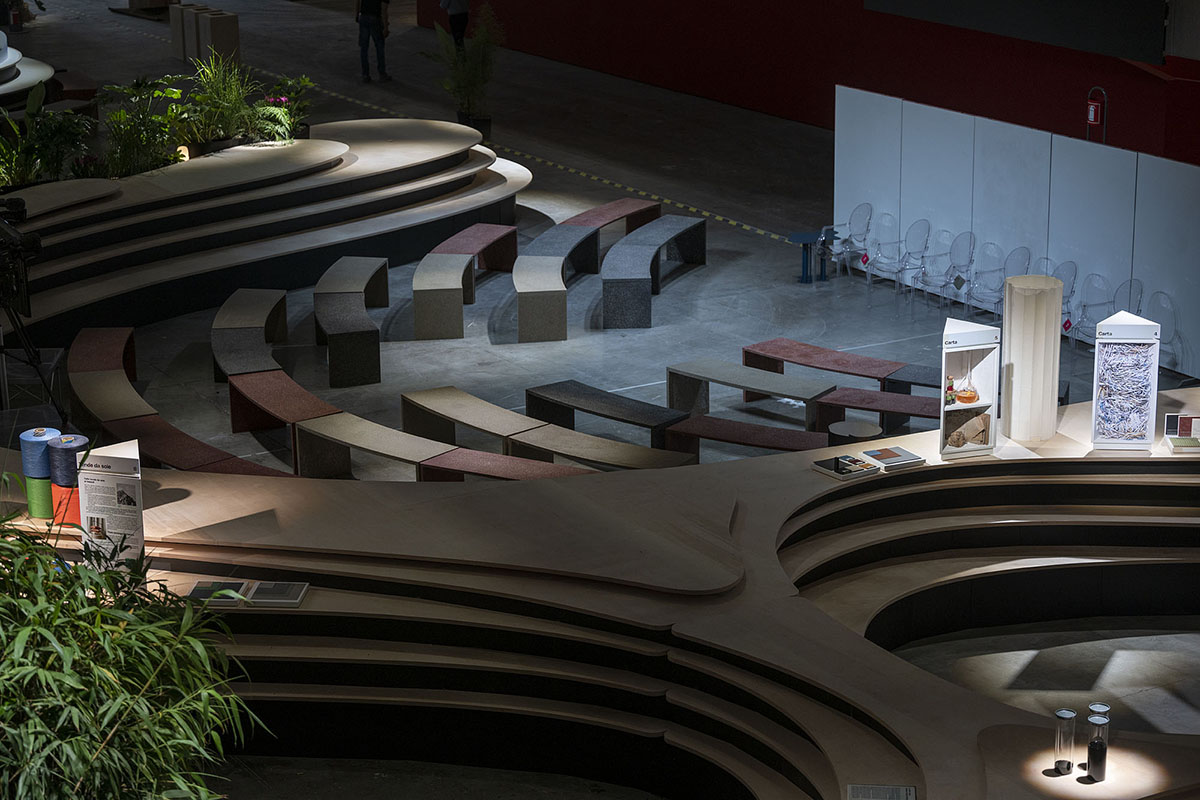
Covering a total of 1,400-square-metre area, the installation spans a large area that turns into both a landscape and a space for dialogue, a refuge for discussion, sharing, reading, and reflecting.
The area includes two large tables, measuring 68 meters by 22 meters and narrate the materials for the ecological transition and the city.
It represents a space around which people can gather "because, after the events of the last couple of years, we’ve rediscovered the value of sociality, which needs to forge a new equilibrium with our surroundings - in terms of space and available resources," said the office.
"A large space mindful of design and the environment, dedicated to the new sociality. An installation in which the word “ecosystem” is fundamental and with which we aim to show that our vision of the future needs to be ecosystemic and capable of bringing knowledge, skills and technologies together for a new generation of materials and design," said Mario Cucinella, founding architect and artistic director of Mario Cucinella Architects.
"The final and specific goal of “eco-systemic know how” – if we can call it that – will be to make life better through a rediscovered respect for nature," added Mario Cucinella.
The display of natural and plant materials creates a sinuous, luxuriant “green” swathe, representing theimportance of forging a new, fundamental and crucial friendship with nature.
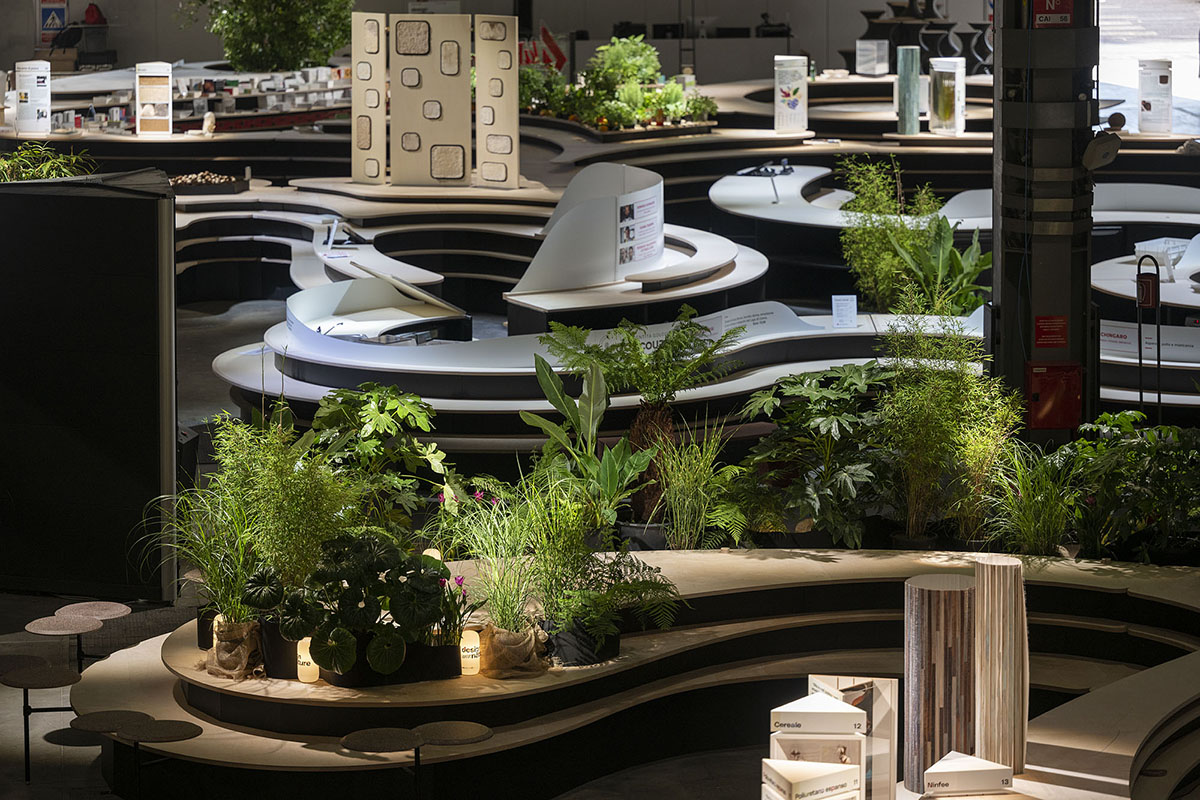
Just as everything that makes up nature changes, has more than one function and more than one life, the same is true of the components of Design with Nature, an assemblage of forms and functions that will find new lives and new destinations: a small library for a school, a classroom, a chair for a public space, a table for a laboratory.
The materials that make up this installation are derived from natural supply chains – demonstrating that ecological transition is already ongoing and that businesses can be the catalysts of this change – or from waste products upcycled and recycled.
Cities are rich fonts of the latter, veritable reserves of resources and materials recoverable through circular processes.
"The project thus demonstrates how vegetable and animal waste, and waste generated by human beings – be it agricultural, industrial or urban – is already being transformed into “something else,” into new raw materials that give a second and third life to the material being generated," added the office.
"This means not just plastic bottles, waste from shoe making and furnishing processes, and sun awnings but the creation of new fabrics for the fashion and textile worlds; from coffee to floor coverings; from the skin and peel of fruit to leather; from mycelium to insulating panels – just to mention some of the new materials on show," the office added.
The installation proves that people can come up with a different way of building and creating products in conjunction with nature, without continuing to consume raw materials but by triggering virtuous ecological behaviours.
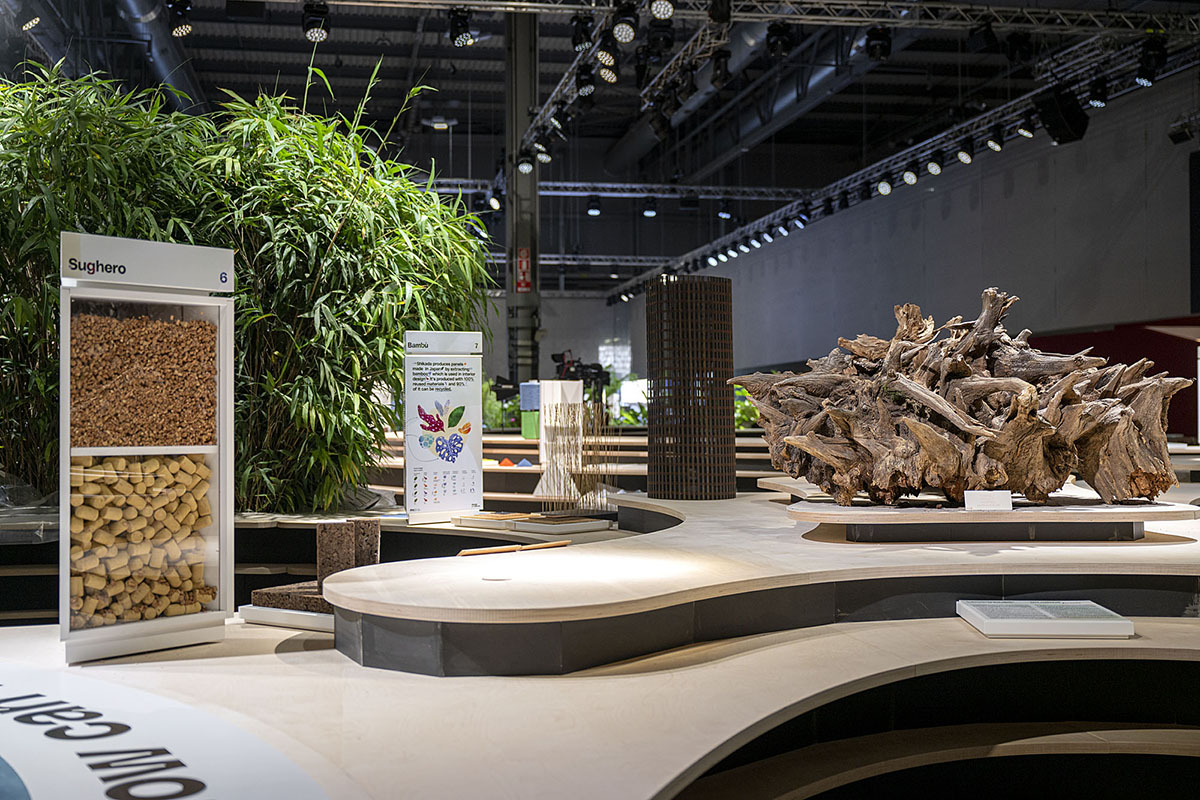
At the exhibition, a series of totems provide visitors with descriptions of the natural, and not so natural, materials, studied by MCA with the scientific support of Professor Ingrid Paoletti of the Milan Polytechnic University.
The exhibition also consists of texts and graphics indicating the origin, the transformation and processing stages, the use and the finished product, narrate the new life of the material.
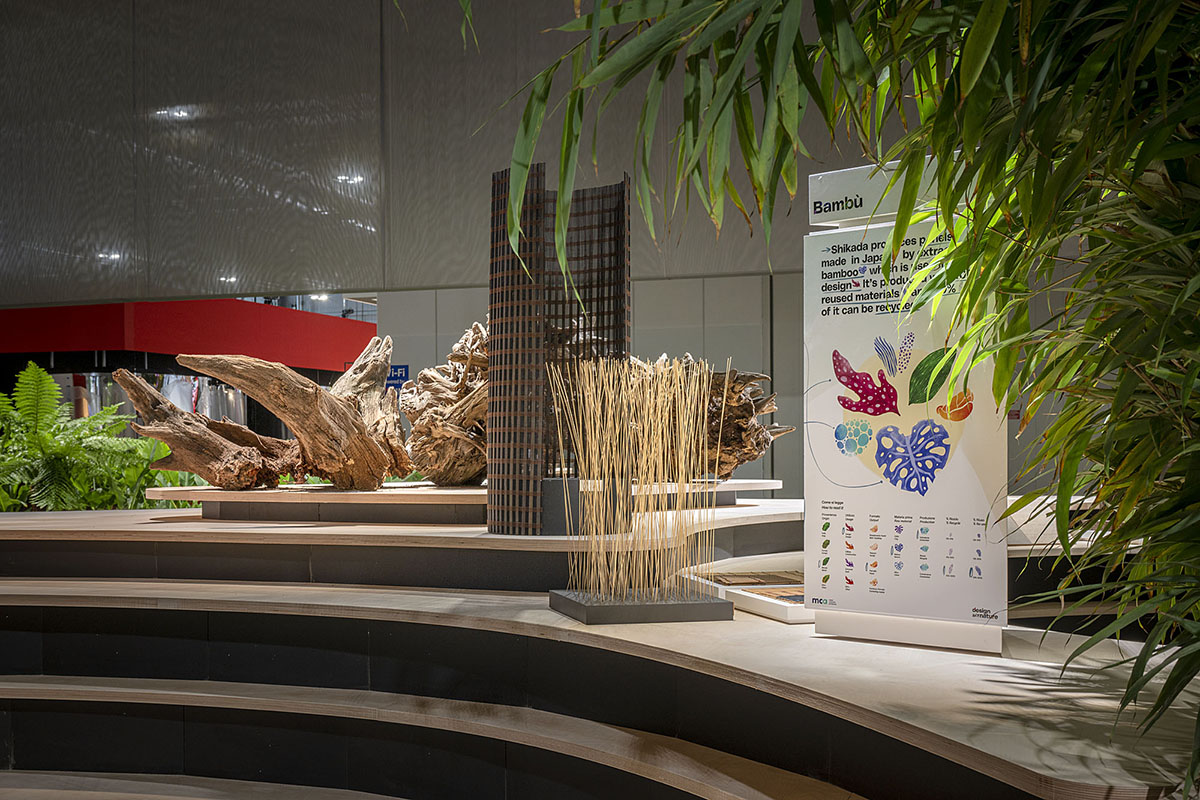
The artwork by Accurat reprises the theme of sustainability, while the video mapping by Zeranta will present “the city as a mine” to the public.
For Mario Cucinella, sustainability is also a central factor in the education process. To support the concept, there will be a presentation on Sunday 12th June, in the Salone Satellite Arena (Pav. 3) of end-of-year projects by students at the SOS – School of Sustainability, the Masters set up by the architect in 2015.
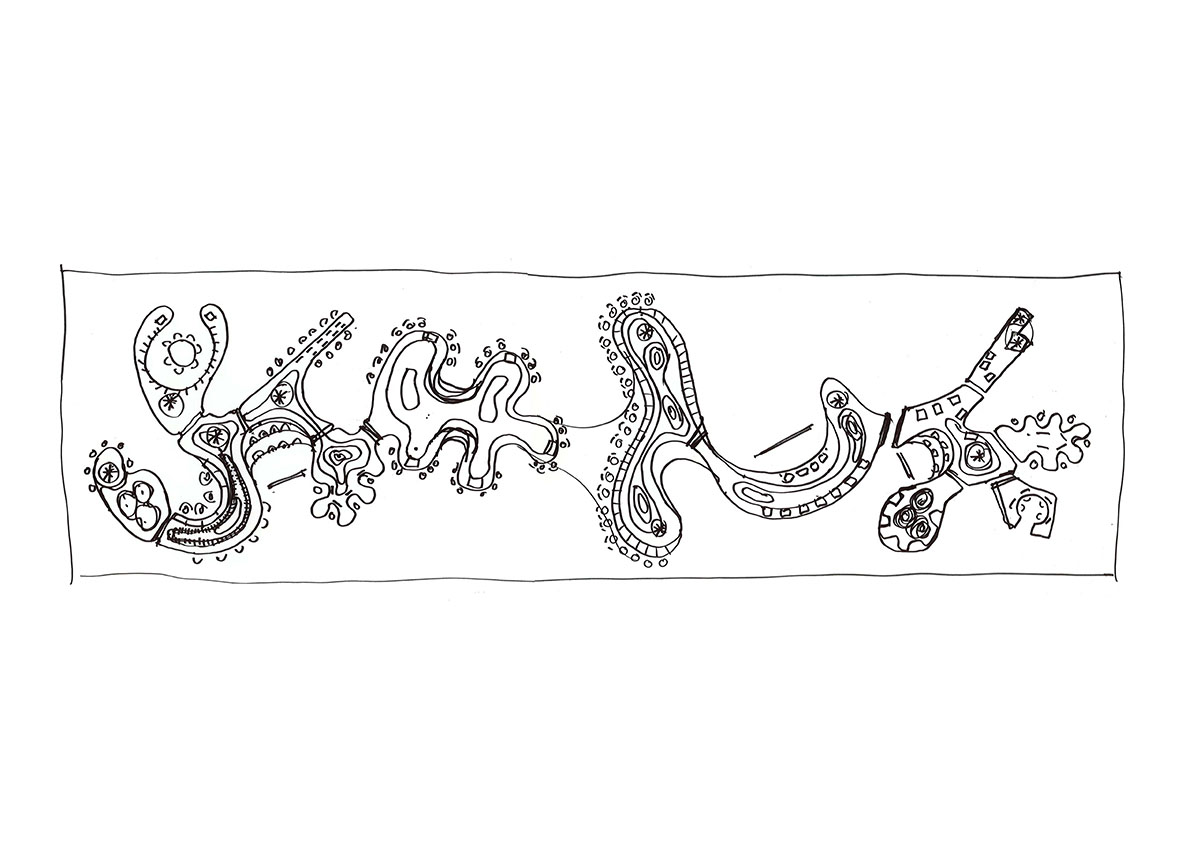
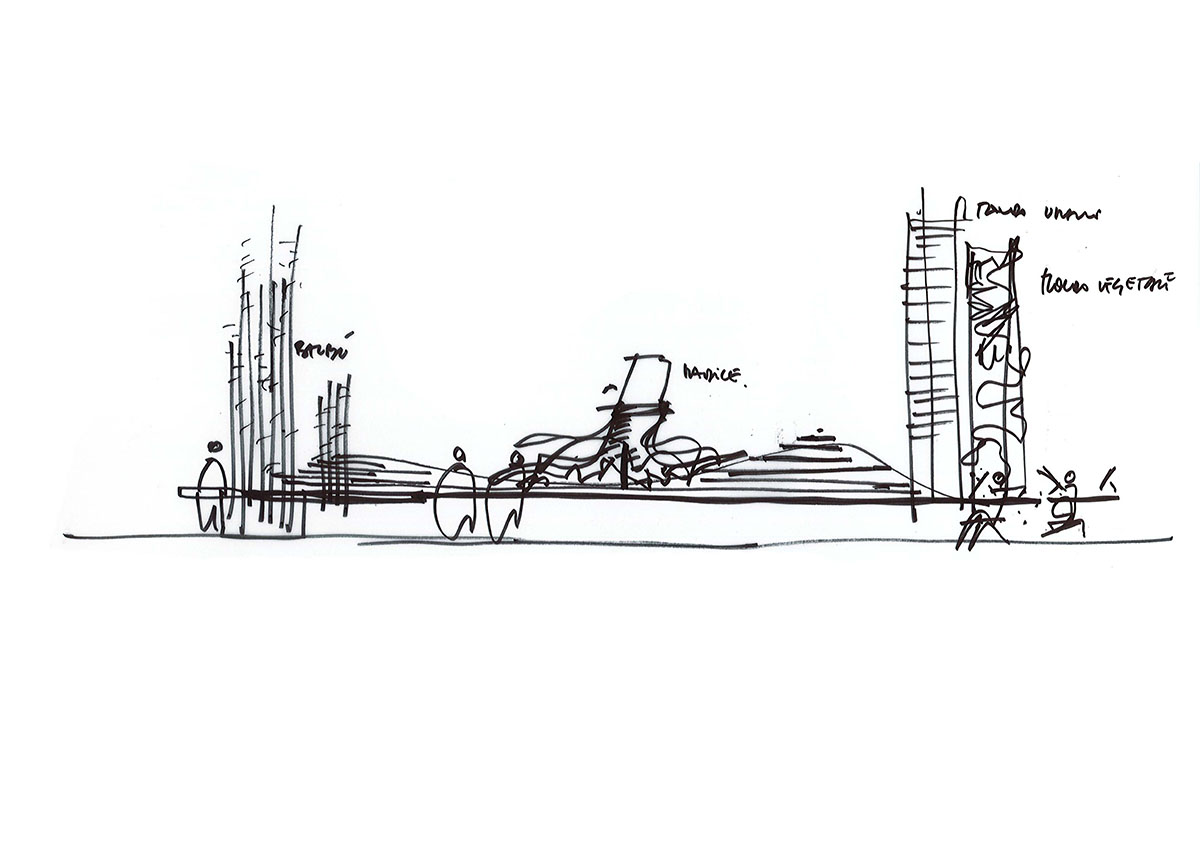
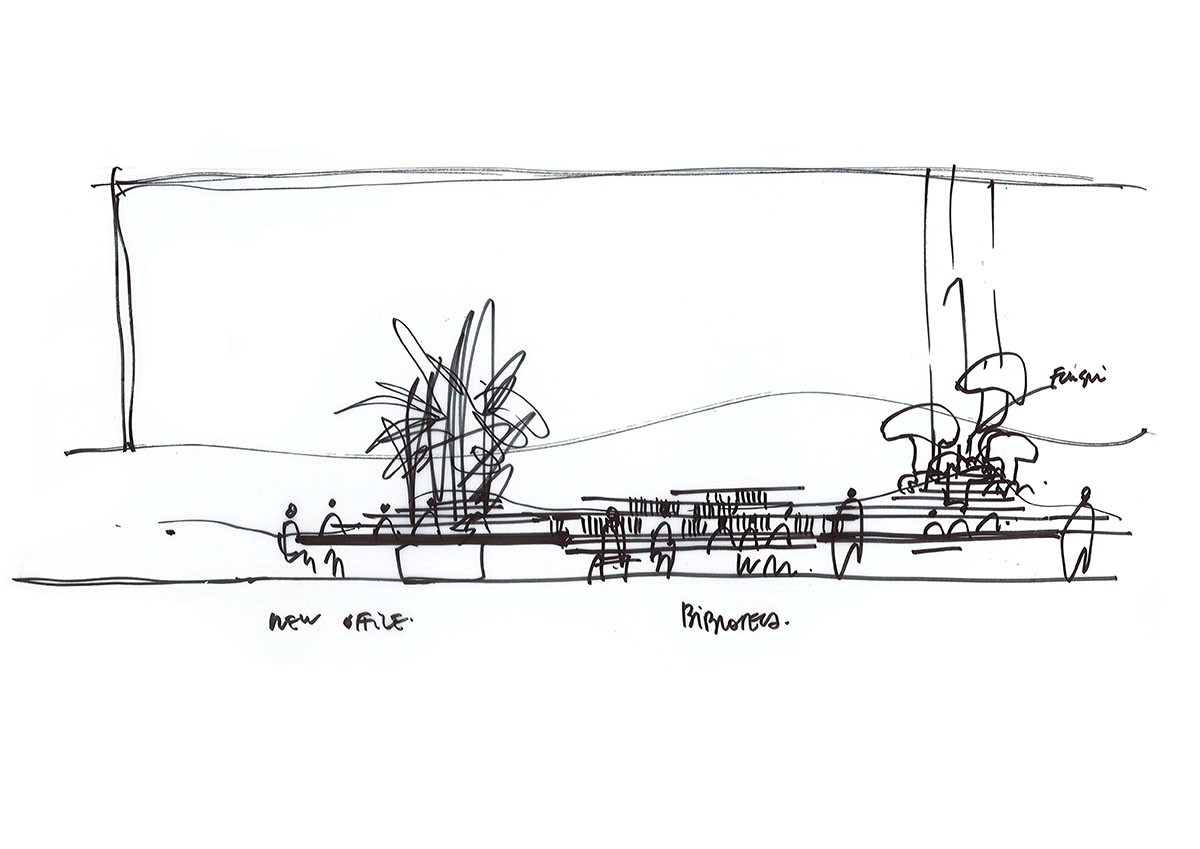
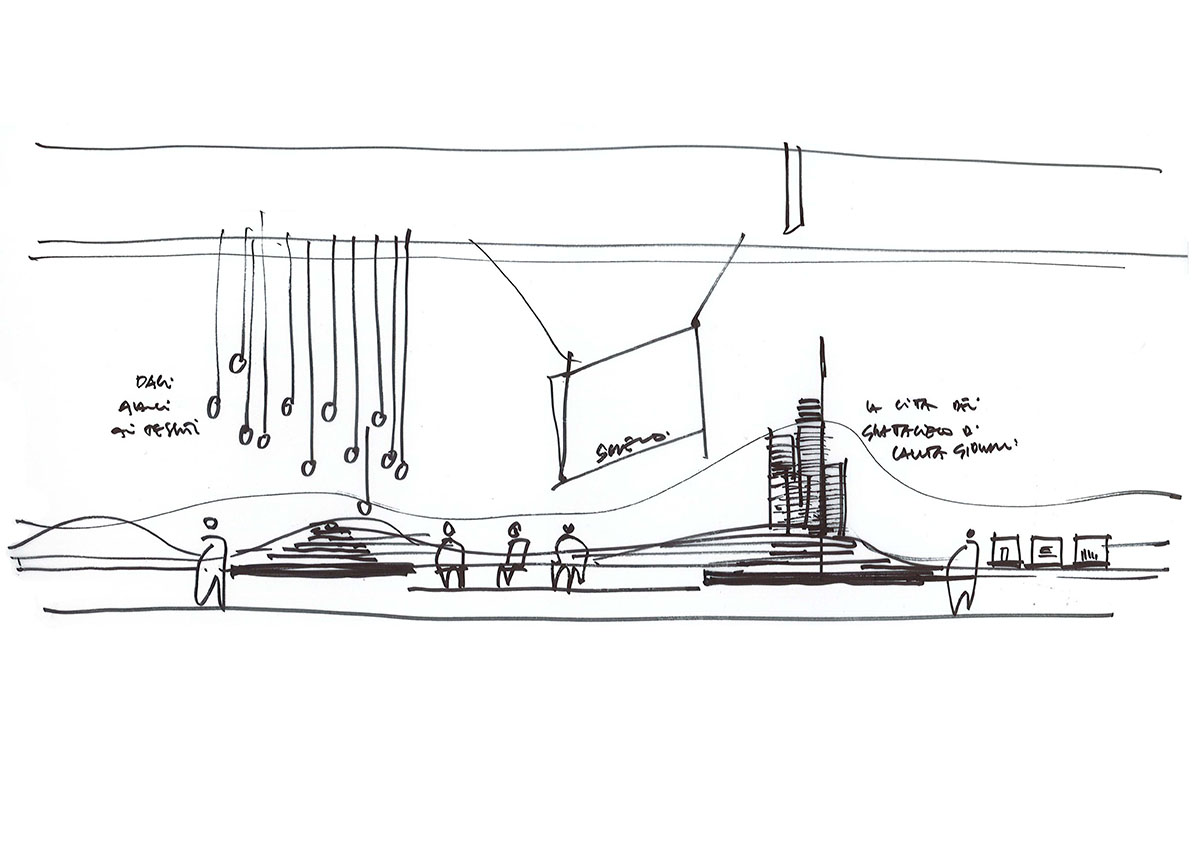
The event will be open to the public and in addition to Mario Cucinella, will also feature Aldo Colonnetti as scientific director and the students.
Several installations, designs and exhibitions are taking place at this year's Milano Design Week, Stefano Boeri Interiors' installation Floating Forest is one of them.
All images © Giovanni De Sandre.
All drawings © Mario Cucinella, courtesy of Mario Cucinella Architects.
> via Salone del Mobile
circular economy Mario Cucinella Architects Milano Design Week
